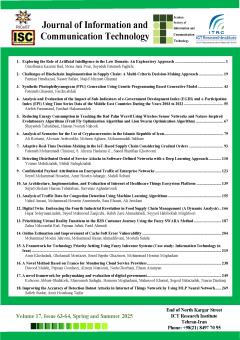Adaptive Real-Time Decision-Making in the IoT-Based Supply Chain Considering Gradual Orders
Subject Areas : ICT
ّFatemeh Mohammadi Chinisaz
1
,
S. Alireza Hashemi G.
2
![]() ,
Saeed Sharifian Khortoomi
3
,
Saeed Sharifian Khortoomi
3
1 - M.Sc., Management Science and Technology Department, Amirkabir University of Technology, Tehran, Iran
2 - Assistant Professor, APA Research Center, Amirkabir University of Technology, Tehran, Iran
3 - Electrical Engineering Department, Amirkabir University of Technology, Tehran, Iran
Keywords: Supply chain, Supply chain management, Supply chain events, Internet of Things, Petri nets.,
Abstract :
The advent of new technologies and global trade has intensified competition to produce high-quality products at lower costs and shorter timelines. This shift highlights the need for flexible, real-time responsive supply chains to adapt to environmental changes and customer demands. Given the dynamic nature of supply chains and their environments, the Internet of Things (IoT) emerges as an effective technology for gathering and transmitting information from internal and external environments, significantly enhancing supply chain management. A review of existing research reveals that most studies have focused on one or two layers of the supply chain, often neglecting the interconnectedness of these layers. Furthermore, prior research has predominantly considered static supply chain environments, disregarding the influence of internal and external changes and events. This research introduces a real-time decision-making system for supply chain management leveraging IoT technology. The proposed system identifies suitable components for each order across all supply chain layers (distribution, production, supply). It also monitors real-time events and provides optimal responses to mitigate the negative effects of disruptions on the order preparation process. Simulation of the supply chain utilizes Colored Petri nets, comprising a main Petri net and 10 subnets to model the distributed structure and dynamic processes of supply chain layers. Comparative analysis with the "Optimal method" indicates that the proposed solution achieves a 13.8% improvement in average cost indicators and a 70.5% enhancement in average time indicators, based on the MAPE criterion, demonstrating its effectiveness in managing dynamic supply chains.
